Handlebar Grip Installation (Flat Bars)
This article will walk through how to remove and install grips on flat handlebars, including lock-on and slip-on styles. For drop style handlebar tape installation, see Handlebar Wrapping.
Getting Started
- Repair Stand — holds bike secure for easy work
- HBH-2 or HBH-3 Handlebar Holder — makes work easier
- For lock-on grips:
- For slip-on grips, one or more of the following may be required:
- Scissors, sharp knife or razor blade
- Rubbing alcohol or window cleaner
- Compressed air
- Spray adhesive or hair spray
The handlebar grips on upright or flat bars should not slip or move during the ride. With time, grips tend to expand and will loosen on the bar. It is possible to help the grip bond to the bar using adhesives. However, grips will eventually wear out and should be replaced.
Typical handlebar grips use either a slip-on or lock-on method of attachment. Slip-on grips rely on a friction fit or interference fit, in which the grips are stretched around the handlebar. Lock-on grips are designed with a locking collar system, keeping the grips secure until they are completely worn out.
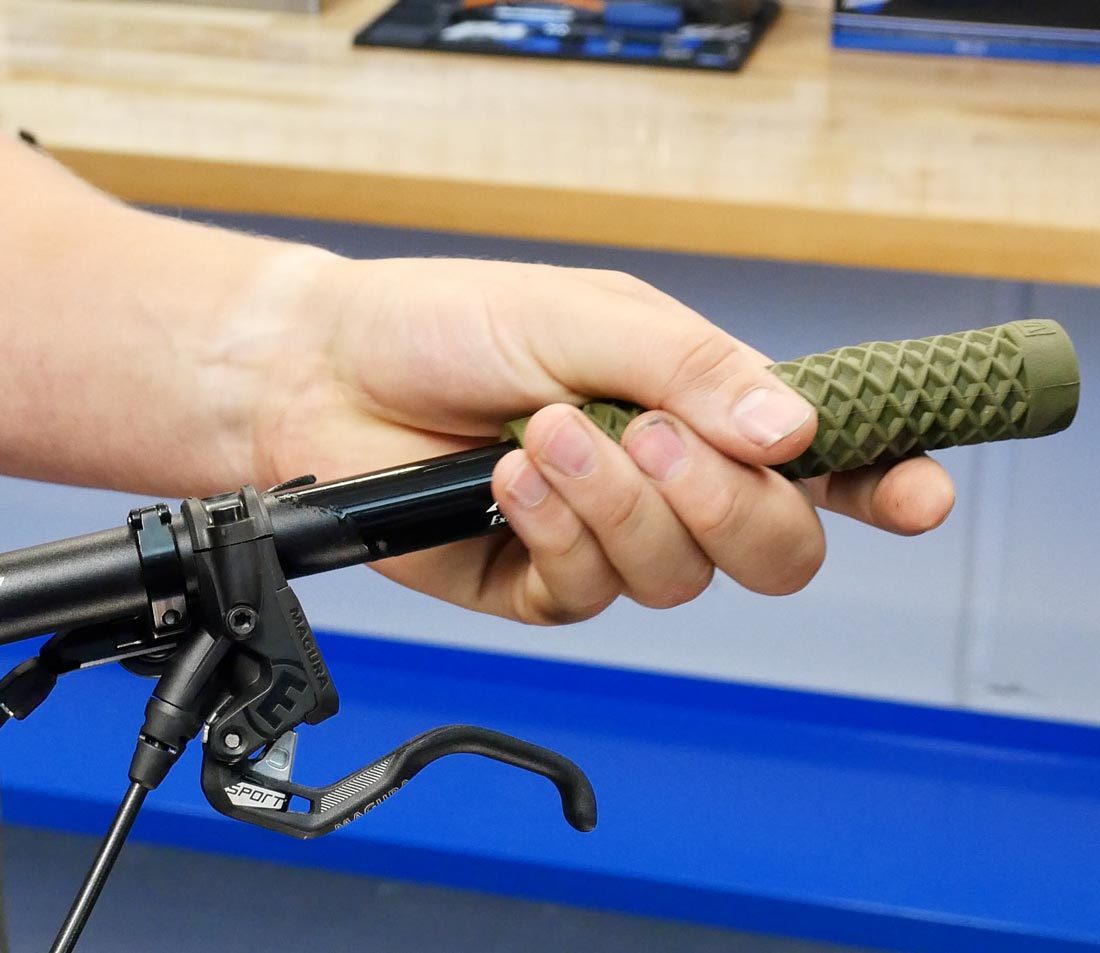
Slip-On Grip
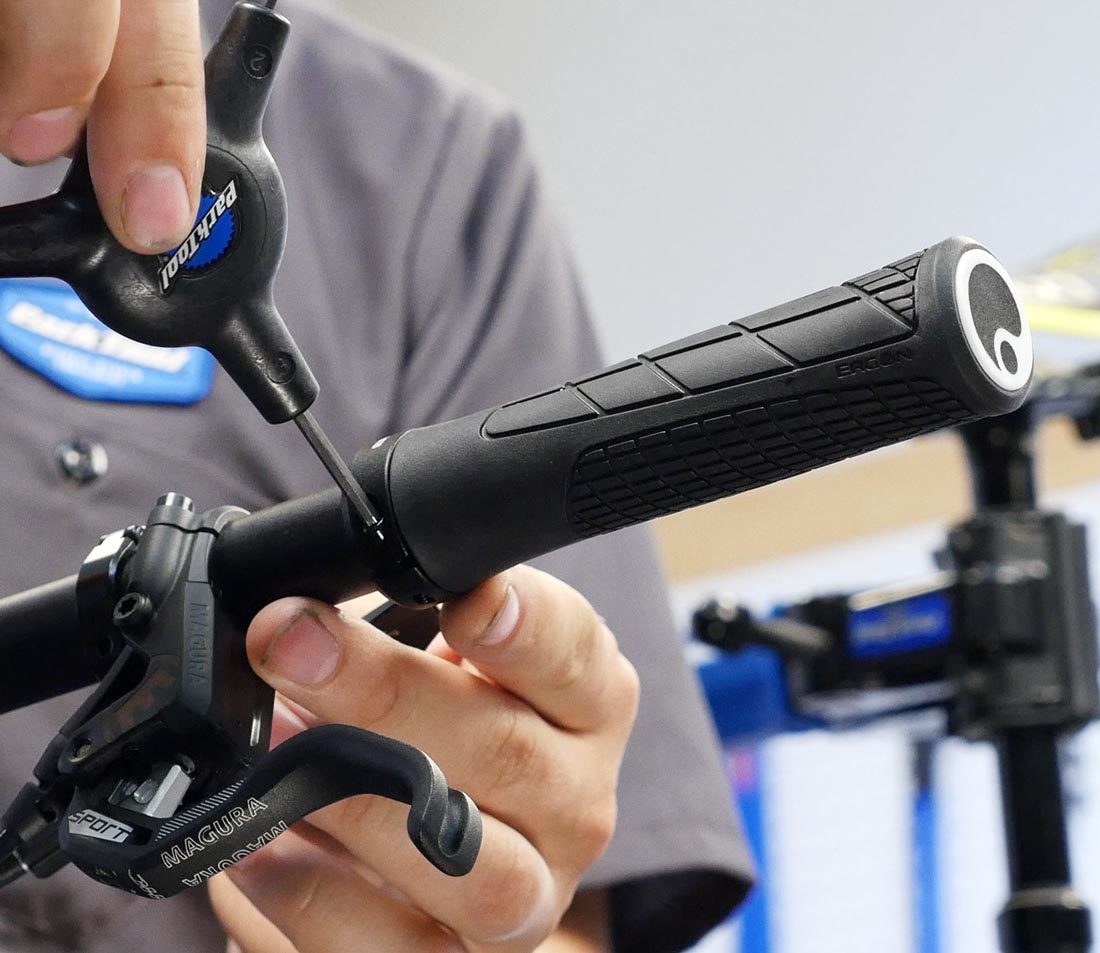
Lock-On Grip
Grip Removal
Before removing the grip, remove any bar-end plugs if present. They can usually be pried out with a small screwdriver. Some designs use an expansion plug system. Loosen with the appropriate wrench and remove the plug.
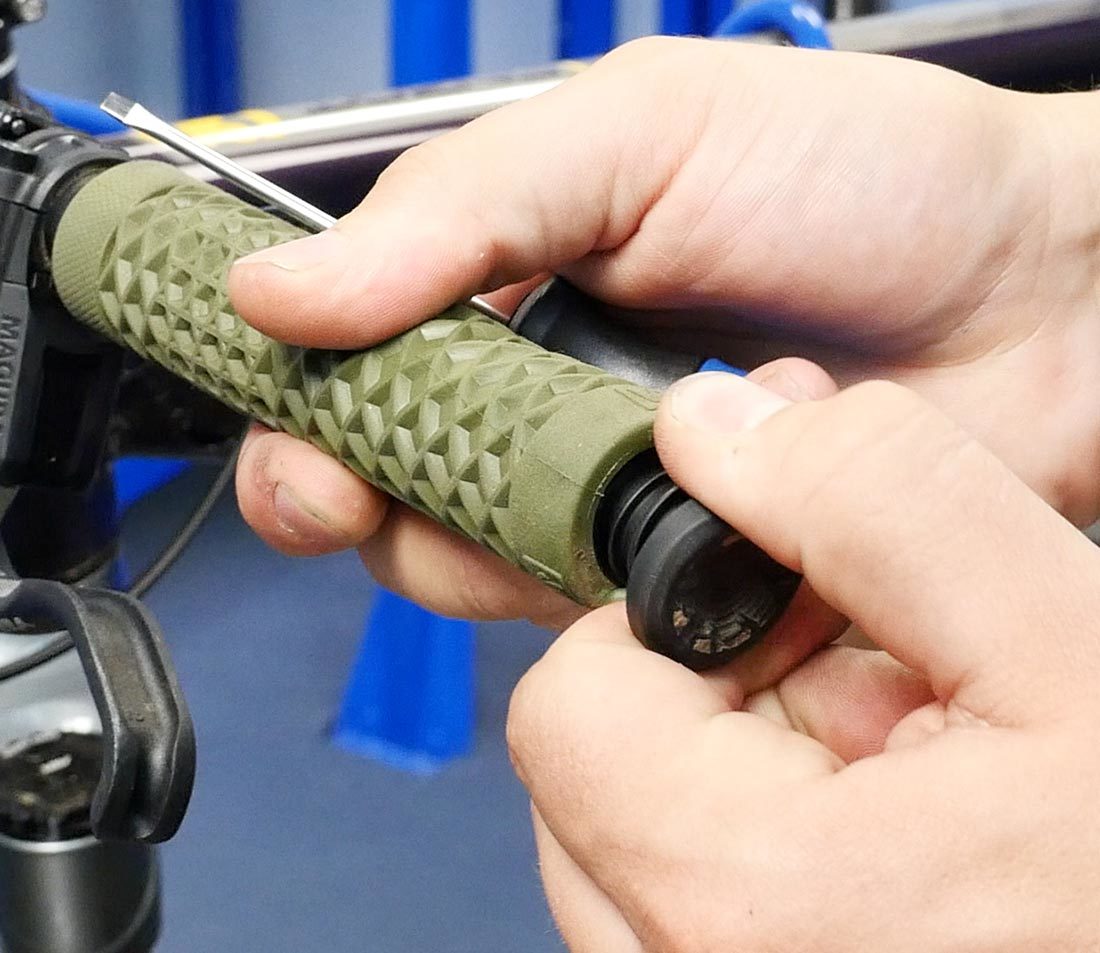
Traditional plugs can be simply pried out
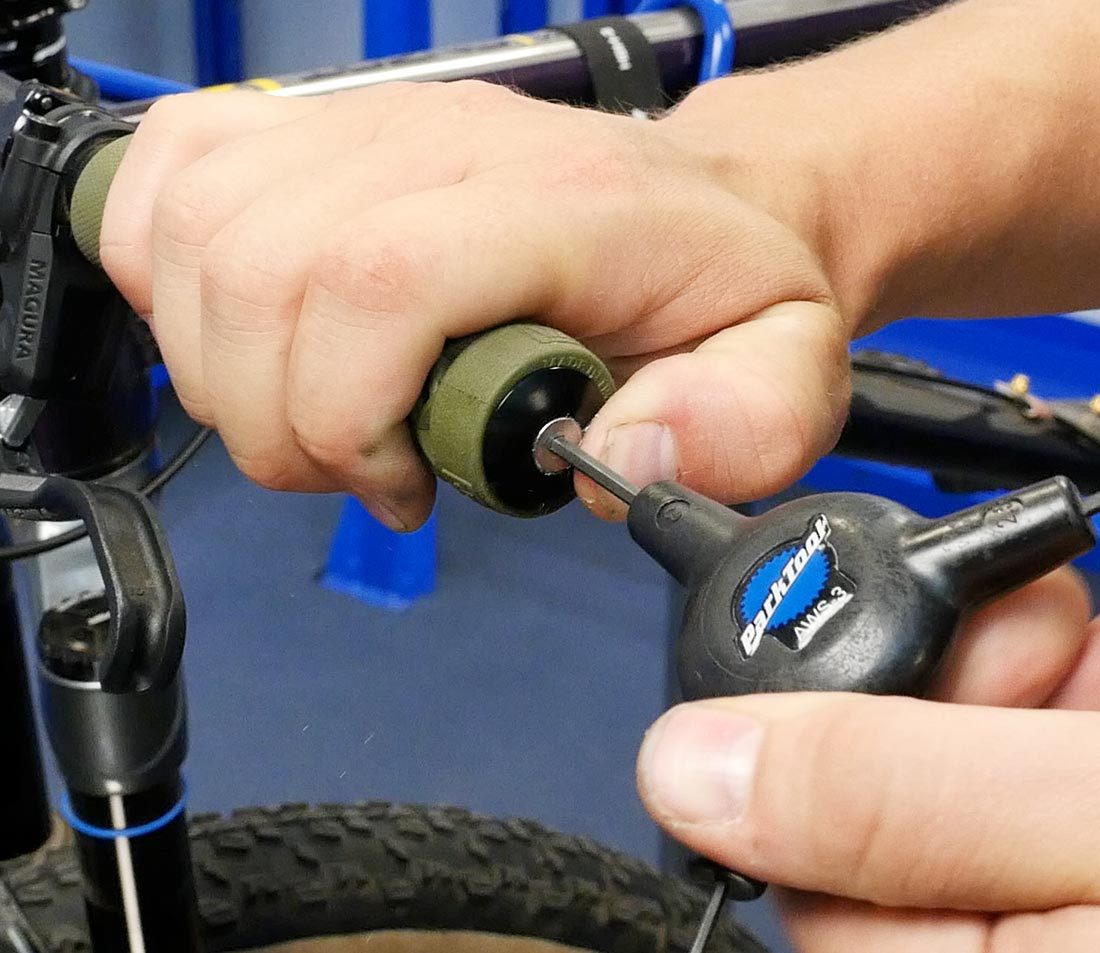
Expansion plugs must be loosened to remove
Slip-On Grip Removal
Several methods can be used to remove slip-on grips:
- An air compressor with the appropriate accessory can be used to create an air gap between the bar and grip. Twist and wiggle the grip to remove it.
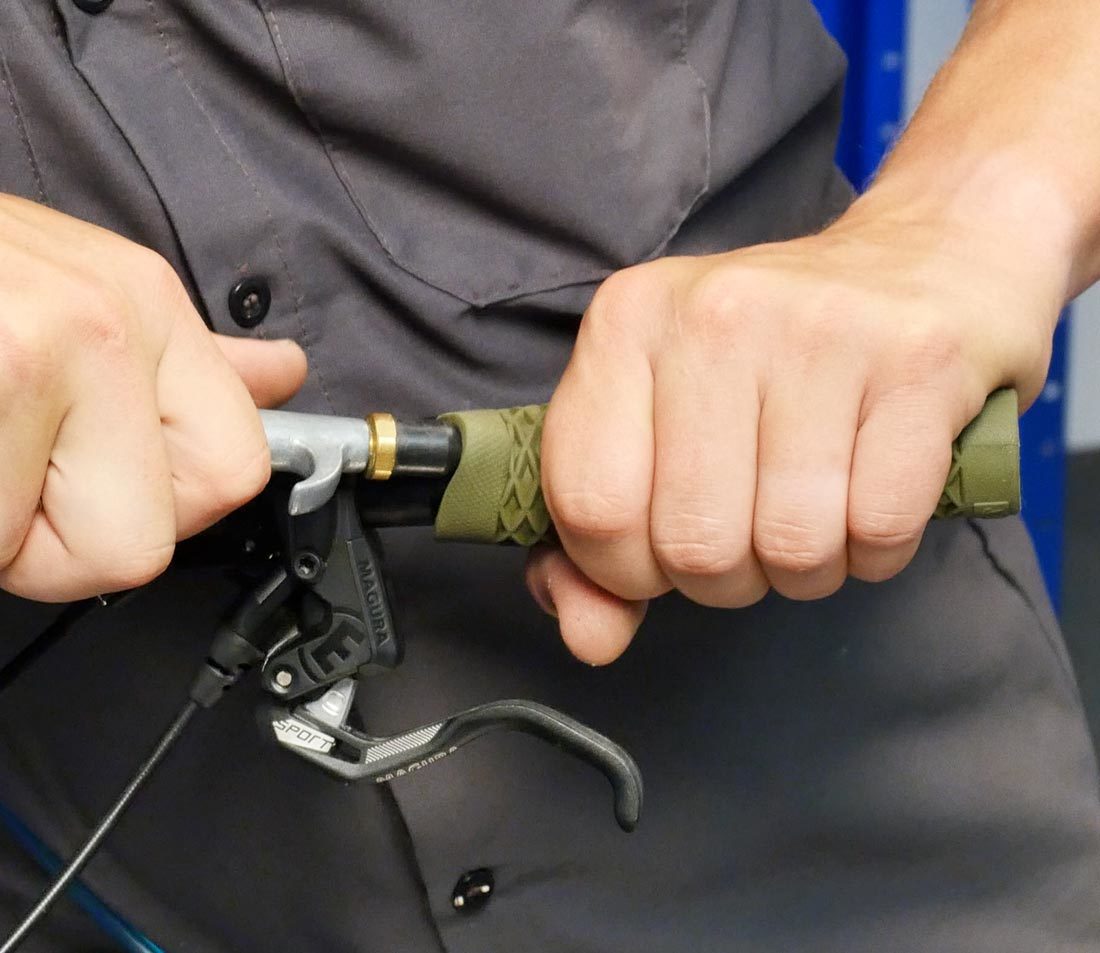
- Use a tool to open up one end of the grip and spray rubbing alcohol inside. This will act as a lubricant, allowing them to slide off.
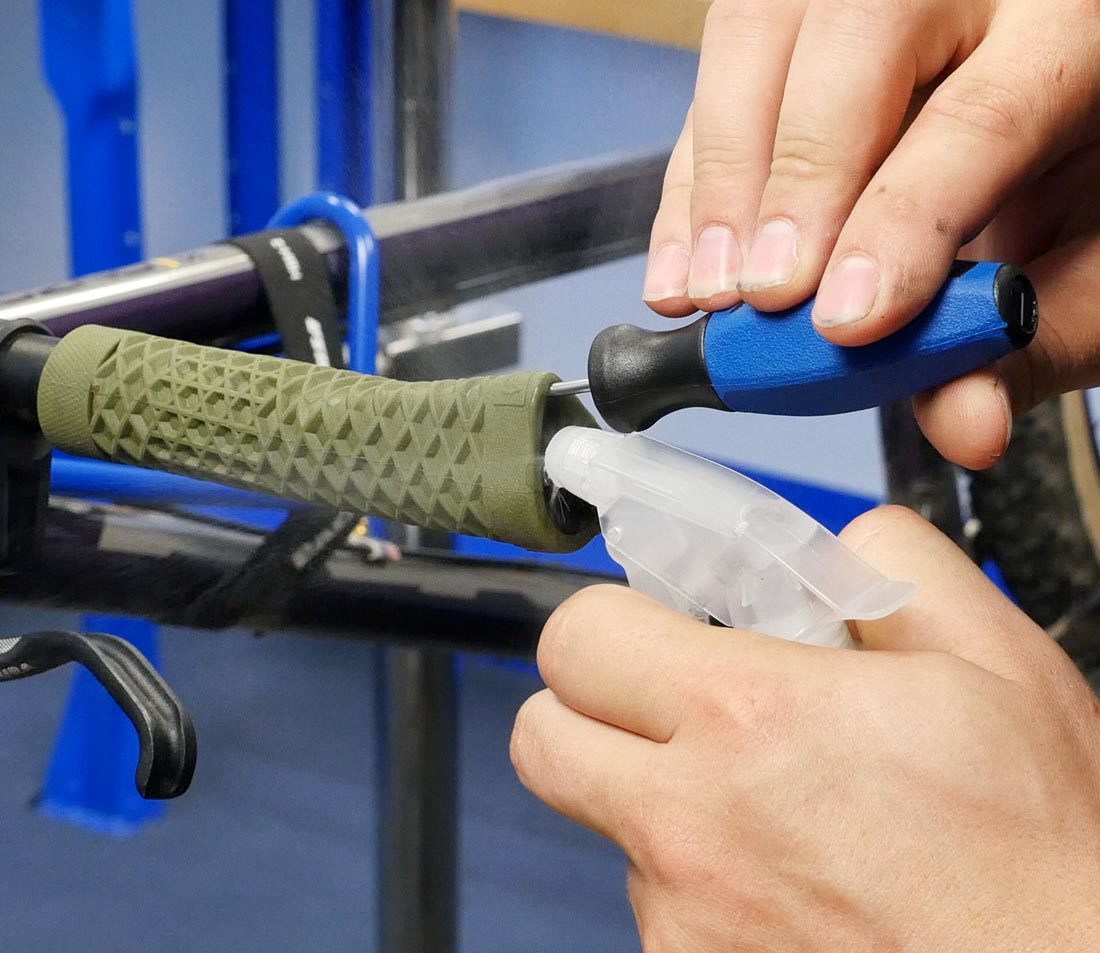
If other methods fail, cut through the grip with a scissors or a blade. Do not attempt this method with carbon fiber bars, as scoring the surface will weaken the handlebar. Scoring steel or aluminum will only cause cosmetic damage.
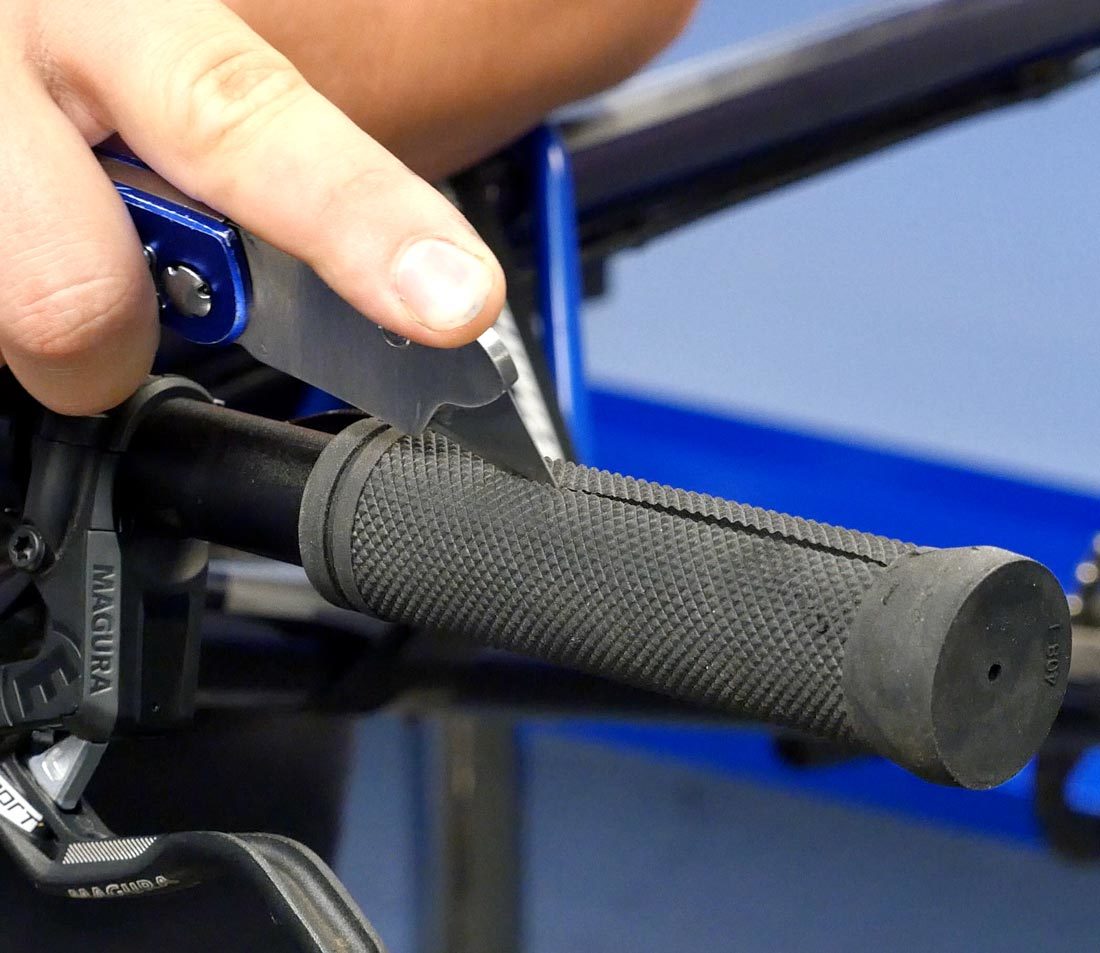
Lock-On Grip Removal
Simply loosen the bolts that are clamping the grip to the bar. These are typically a 2.5, 3, or 4mm hex fitting.
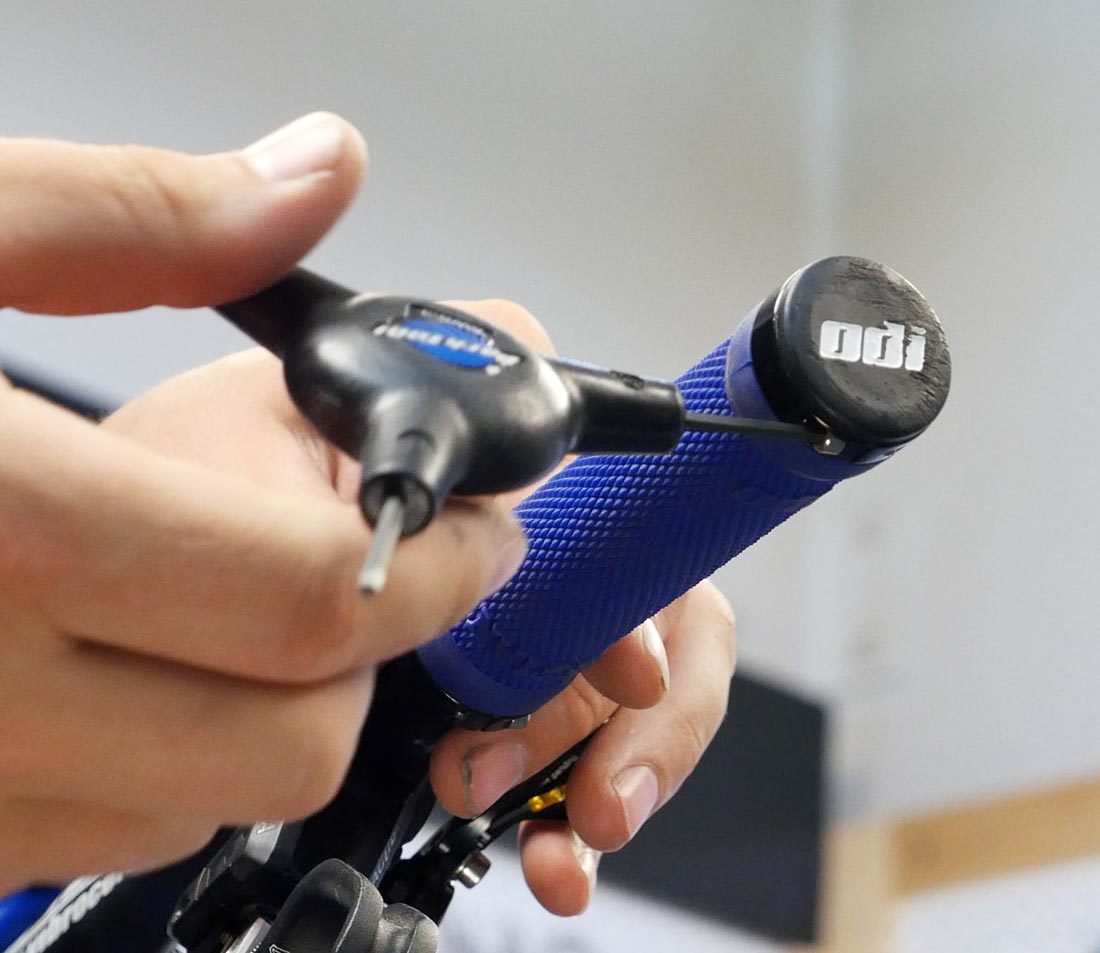
Grip Installation
First, clean the bar off with a nonresidual cleaner like isopropyl alcohol to ensure that the bar is free of contaminants and oils.
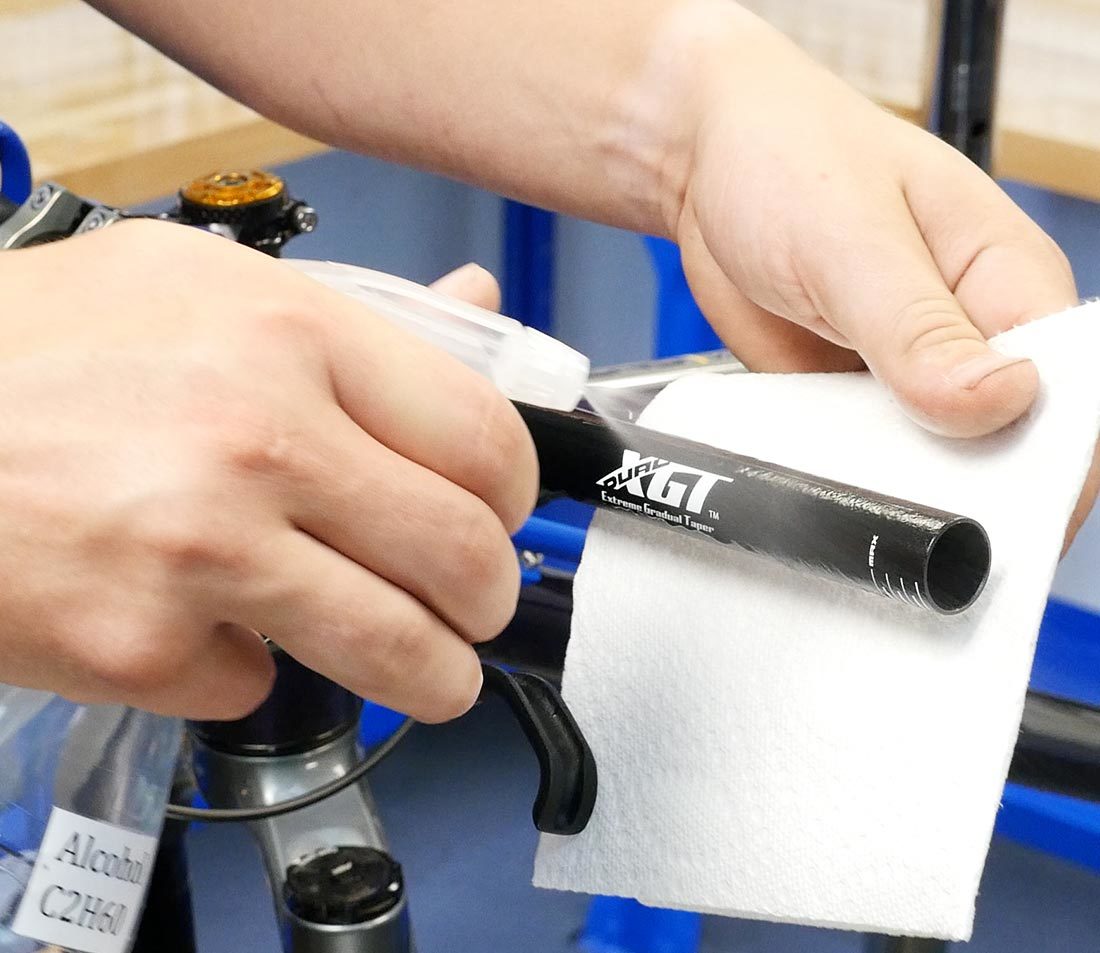
Slip-On Grip Installation
It can be challenging to slip the new grips onto the bar, especially with tight fitting styles.
- Blowing air between the bar and grip can be helpful when working the grips on.
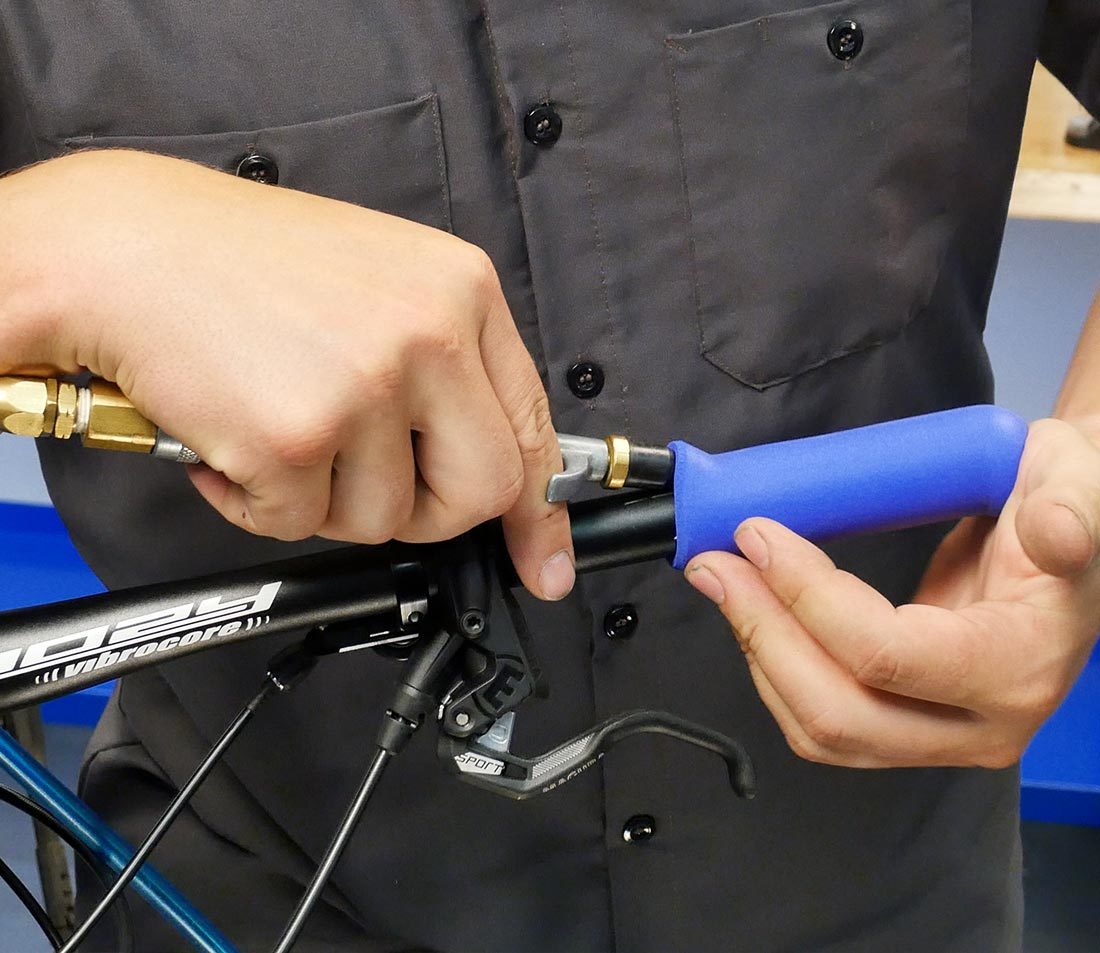
- Similar to the removal process, alcohol can be used as a lubricant. Spray inside the grip and onto the bar, and slide the grip onto the bar. Be sure to wait until the alcohol has fully evaporated before riding the bike — this may take a few hours.
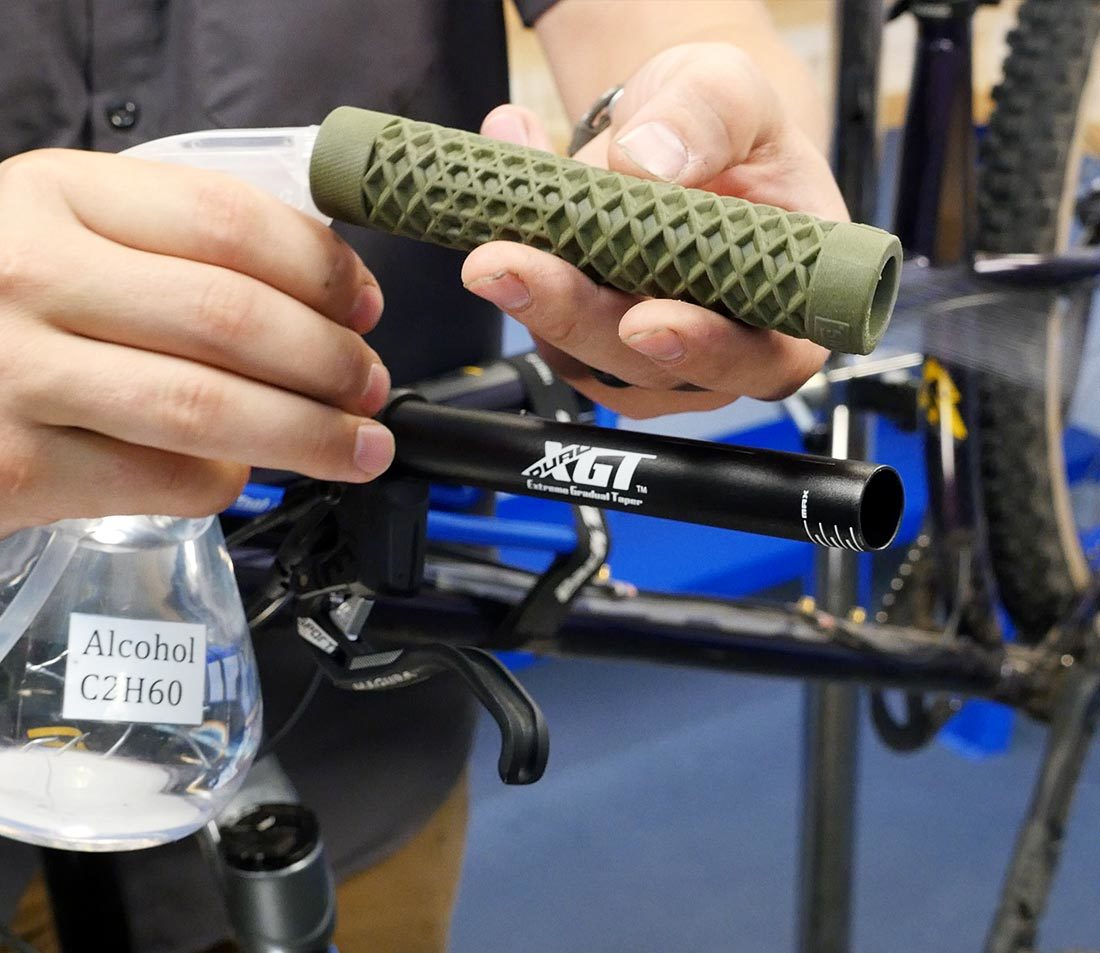
- Finally, adhesive spray can also be used as a lubricant, and will help adhere the grip to the bar once dry. Hairspray can also be used for this purpose. It may take a day or so for some adhesives to fully dry.
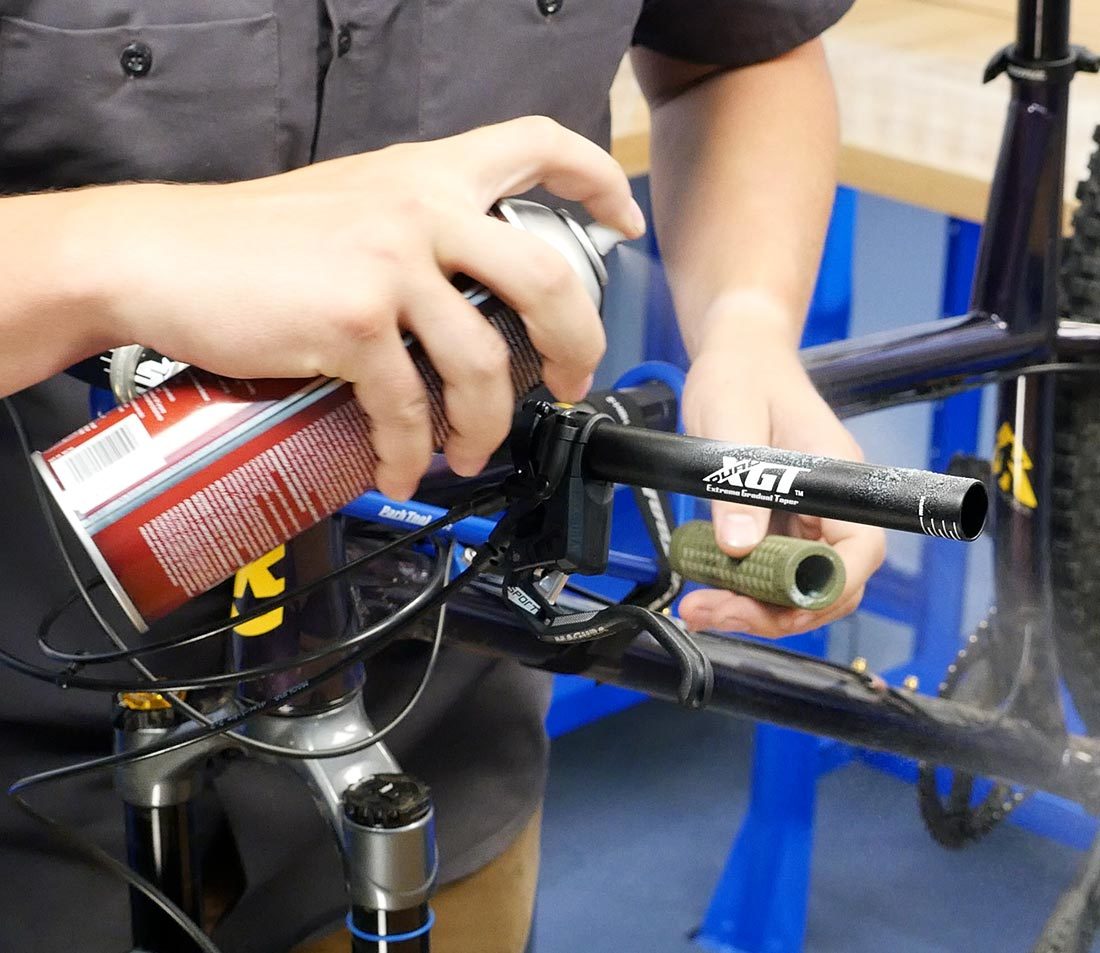
Lock-On Grip Installation
Simply slide the grip on, orient the grip where you like it, and torque the bolts to the manufacturer’s stated torque value.
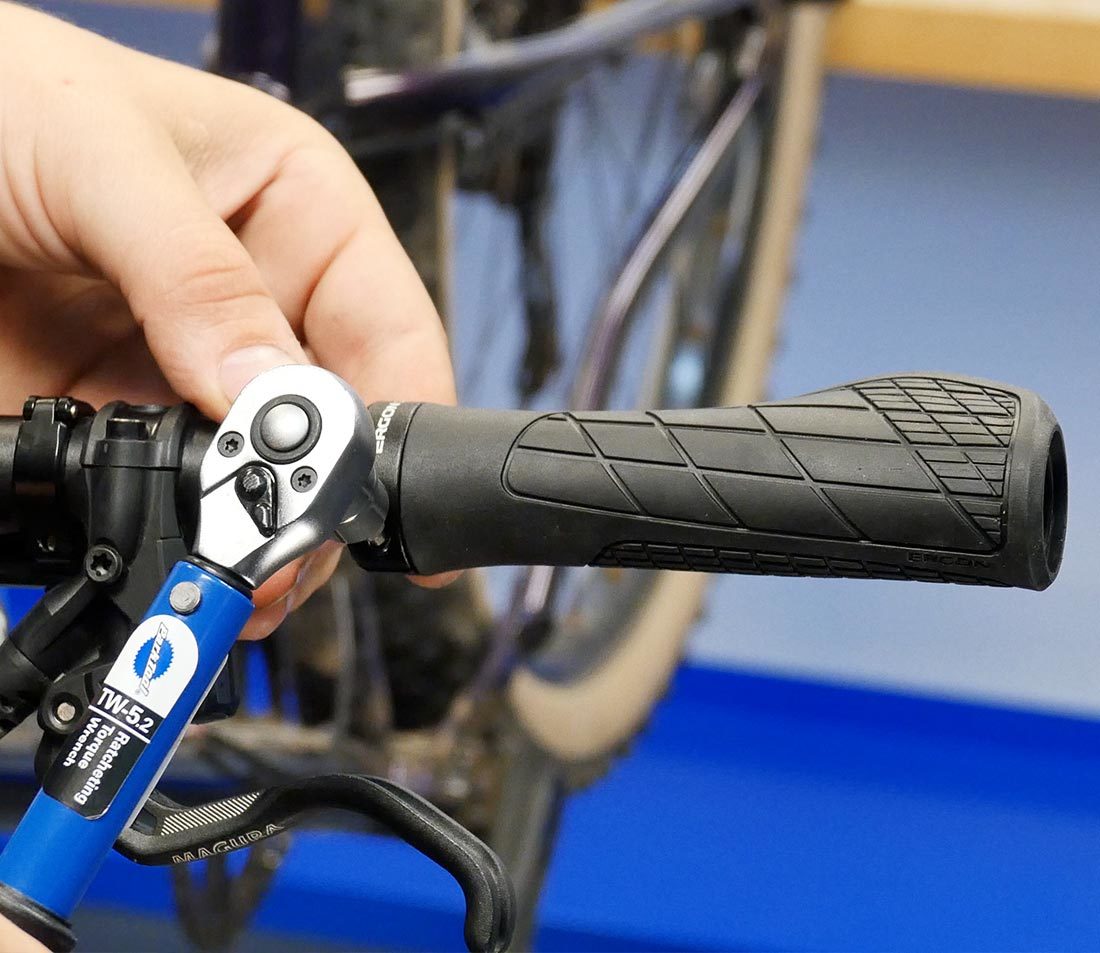
Bar End Plug Installation
Once you have the grips on, install the bar end plugs. These are an important part of your bike and should be considered a safety item. Bar end plugs are usually be pressed in by hand. If they are stubborn, the can be gently tapped in with a hammer. In the case of expansion plugs, install into the bar and snug the bolt.
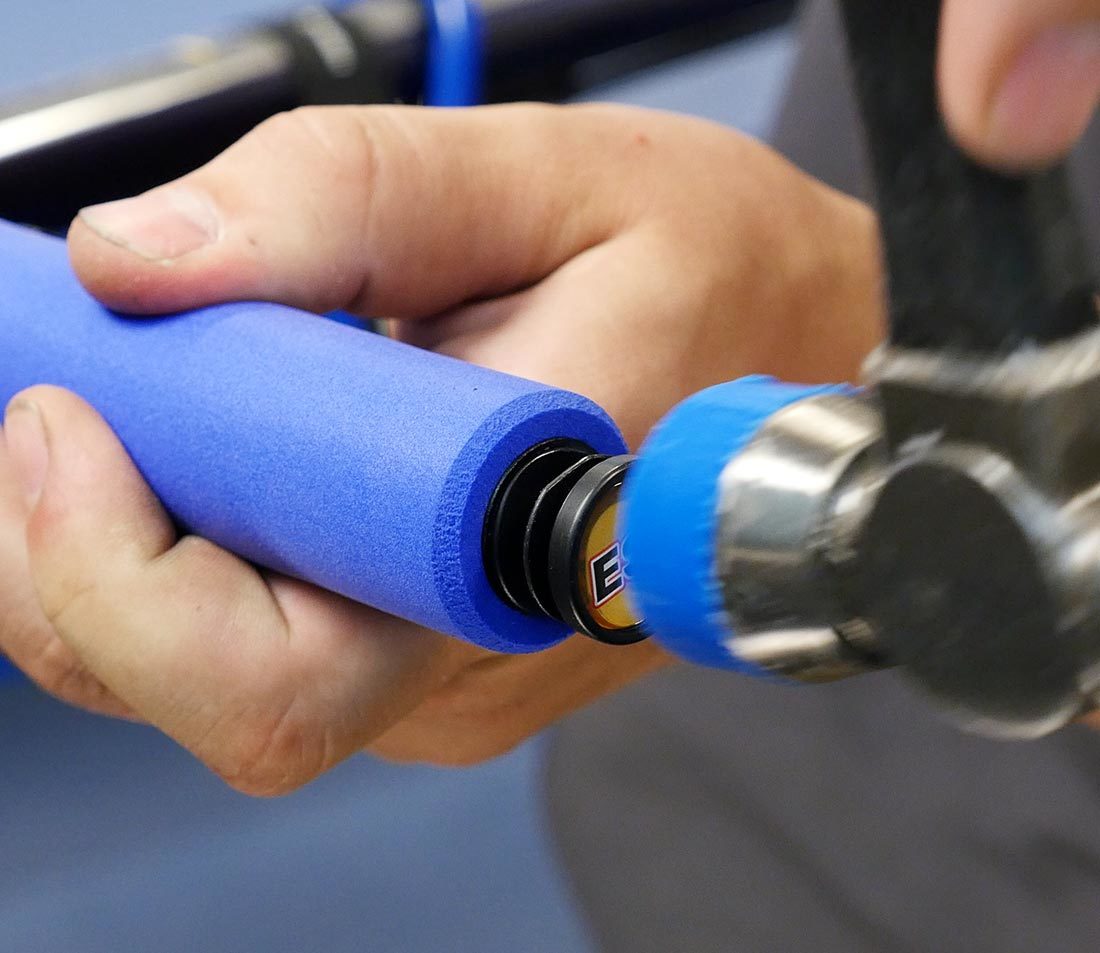
Strike the plug with just enough force to seat it in the bar
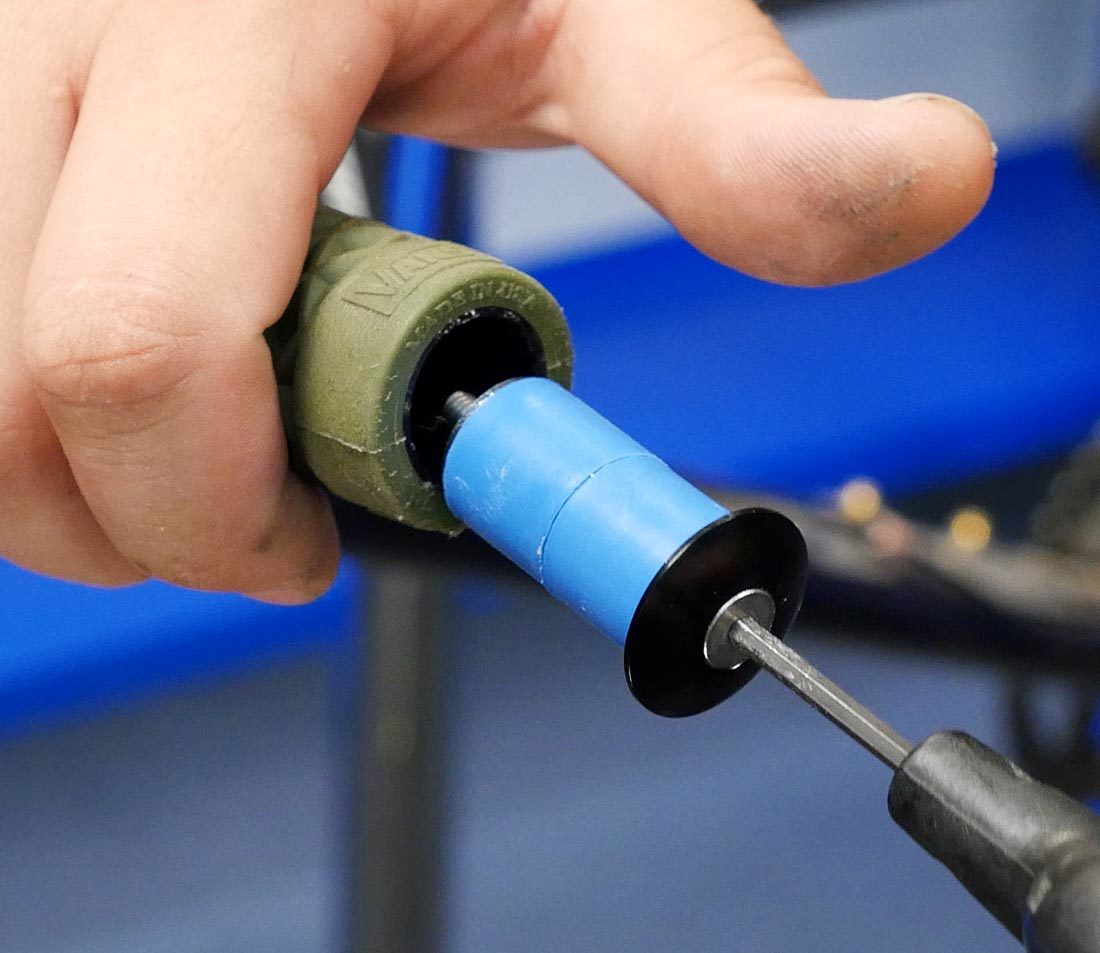
Many bar end expansion plugs do not have a torque spec — typically "snug" is sufficient